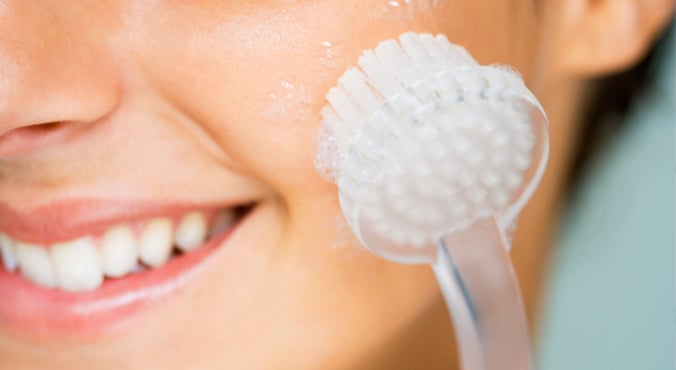
Image: Someone who doesn’t know when to stop via Thinkstock.
Are you addicted to the buzz of your Clarisonic? Do you regularly apply actives like Retin-A, salicylic and glycolic acid? Do you see your skin therapist for microdermabrasion more than you see your family?
If that’s you, then sorry but you’re probably overdoing it in the exfoliating department. Step away from the microbeads friends, step very far away.
The above treatments aren’t bad for your skin, but if you’re doing all of them at the same time you could be causing your skin damage, not helping it out. And if that’s not enough to pry the cleansing device from your clutches, one of the biggest signs you’re over-exfoliating too much is… drumroll please…. pimples. Ugh.
We spoke to Emma Hobson, Education Manager for the International Dermal Institute and to get the low down on how much is too much.
“If you’re overdoing it, your skin can become red and sensitive, and dry, irritated patches may appear,” says Hobson. “It may peel in the corners of the nose and or mouth and the skin may become more reactive to other products you are using.”
Got it. Red skin bad. But shouldn’t we be doing it more in the cooler months?
“If your skin becomes more delicate and sensitive in winter then exfoliate a little less, avoid scrubs and opt for hydroxy acids or a very light version of ‘microfoliation’ using rice bran powder,” says Hobson. “If your skin feels dry and a bit flaky you need to ensure you’re exfoliating two to three times per week to keep the skin smooth and help keep the barrier intact.”




























































































